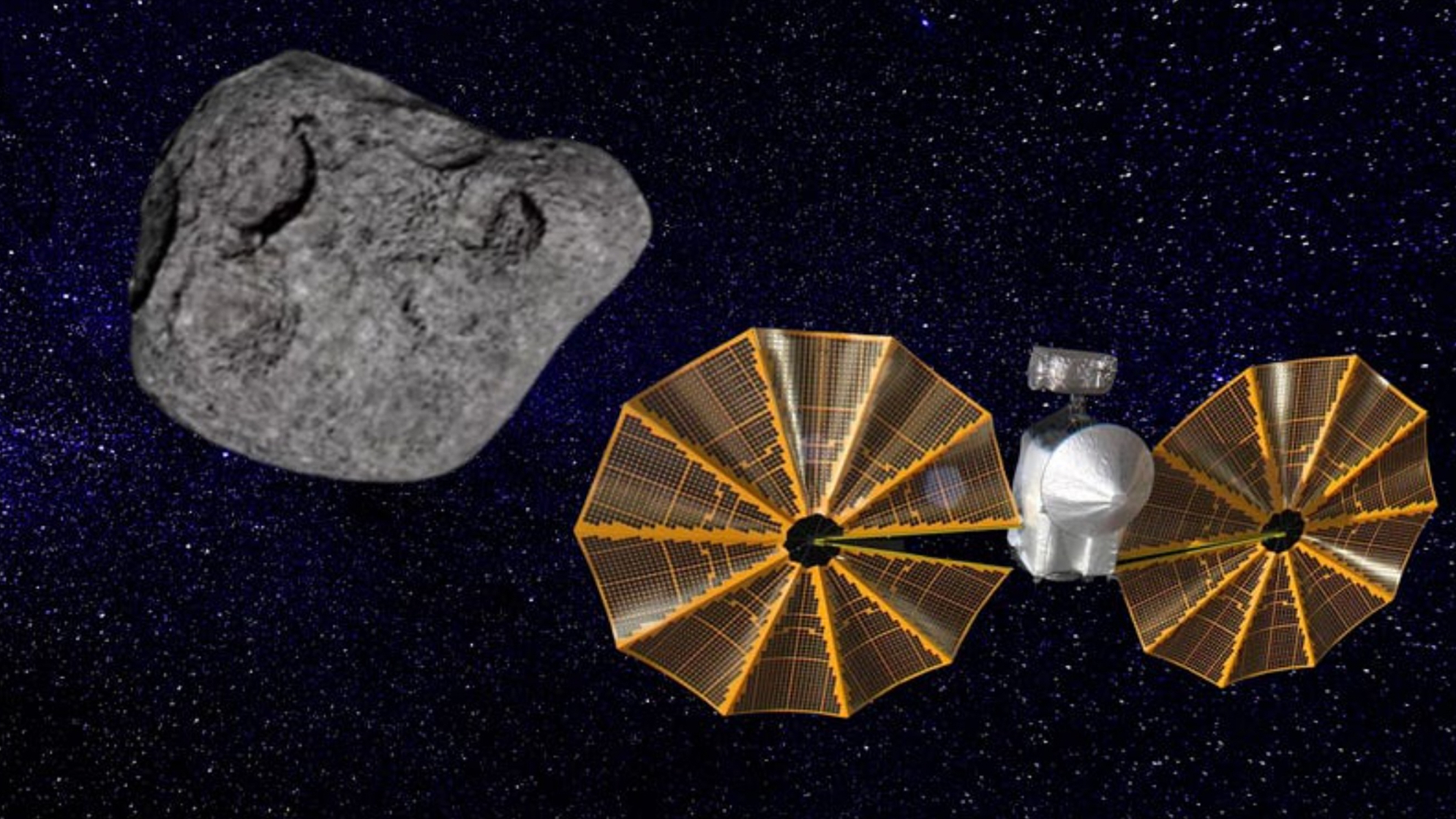NASA's Lucy probe will fly by a 'dinky' asteroid on Nov. 1. Here's what to expect (video)
On Nov. 1, NASA's Lucy probe will fly by the space rock Dinkinesh as a test of its systems before heading to the Trojan asteroids in Jupiter's orbit.
NASA's Lucy probe will fly by the space rock Dinkinesh on Nov. 1, and an agency video gives us a preview of the encounter.
Dinkinesh is located in the main asteroid belt between Mars and Jupiter and will be the first asteroid in Lucy's record-breaking tour, which will see the spacecraft visit nine other space rocks. These future destinations for Lucy are Trojan asteroids, which share the orbit of the solar system's largest planet, Jupiter.
The Lucy mission, which launched in October 2021, was not originally set to visit the 0.5-mile-wide (0.8 kilometers) Dinkinesh, previously known by the designation 1999 VD57; the decision to add it to the spacecraft's itinerary was made in January 2023. This will be more than a sightseeing jaunt, however. While at Dinkinesh, Lucy will test its innovative Terminal Tracking System, which is designed to keep its instruments pointed at asteroids during flybys.
Related: Meet the 10 asteroids that NASA's Lucy spacecraft will visit
That's not as easy or straightforward as it may sound. During its final approach to Dinkinesh, Lucy will be racing toward the space rock at 10,000 mph (16,000 kph) — about six times faster than a bullet fired by a rifle.
The NASA video explains that the Dinkinesh encounter presents the perfect opportunity to test this system. The geometry of the flyby — in particular, the angle at which Lucy will approach Dinkinesh in relation to the sun — is very similar to the mission's planned Trojan asteroid encounters.
That means that the encounter between Lucy and Dinkinesh acts essentially as a "dress rehearsal" for the probe's encounters with its main scientific targets. This will be a more challenging test, as Dinkinesh is smaller than the other Lucy targets — in fact, it will be the smallest main belt asteroid ever imaged up close by a spacecraft.
Breaking space news, the latest updates on rocket launches, skywatching events and more!
Following its encounter with Dinkinesh, Lucy will move away from the edge of the main asteroid belt, where the space rock is located, and head back to Earth for a gravity assist in December 2024 that will send it hurtling toward the Trojan asteroids. It will fly by another main belt asteroid in 2025, then arrive at one set of Jupiter Trojan asteroids in 2027.
"This is really a tiny little asteroid," Lucy principal investigator Hal Levison said in a statement in February of this year, when Dinkinesh was given its name. ("Dinkinesh" is the Ethiopian name for the famous human-ancestor fossil Lucy, which was found in that nation.)
"Some of the team affectionately refer to it as 'Dinky,'" Levison added. "But, for a small asteroid, we expect it to be a big help for the Lucy mission."

Robert Lea is a science journalist in the U.K. whose articles have been published in Physics World, New Scientist, Astronomy Magazine, All About Space, Newsweek and ZME Science. He also writes about science communication for Elsevier and the European Journal of Physics. Rob holds a bachelor of science degree in physics and astronomy from the U.K.’s Open University. Follow him on Twitter @sciencef1rst.

